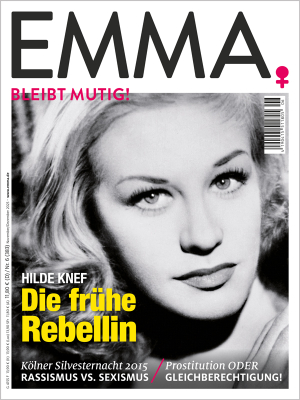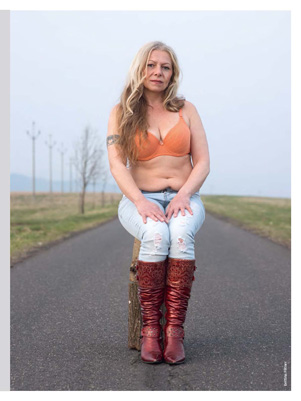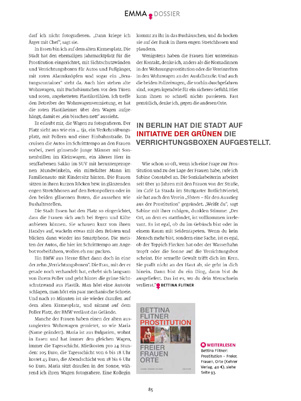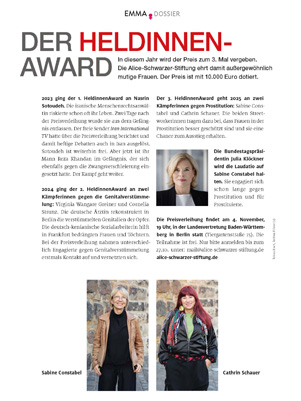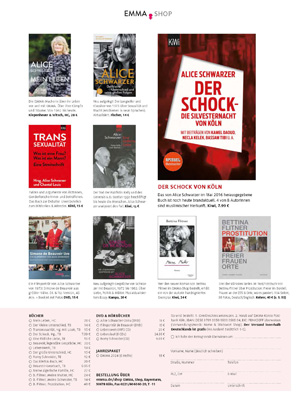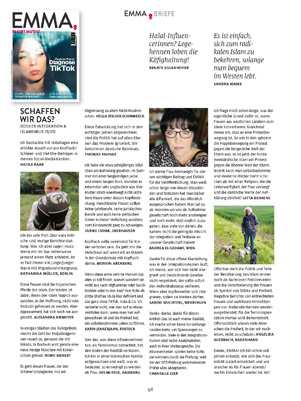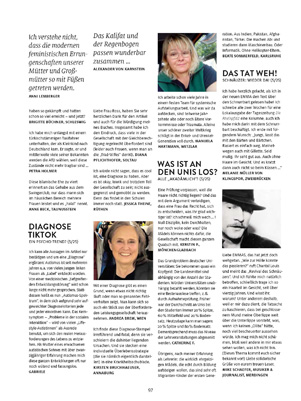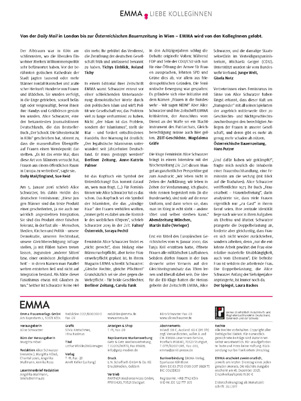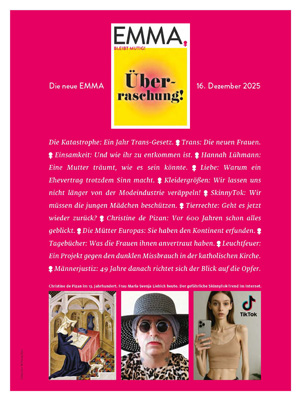The Women's Media Tower
When Alice Schwarzer, Germany's most renowned feminist and editor of the women's Journal EMMA exclaimed „Wiever alaaf!"2 (Women to the Fore), she celebrated the fact that in 1994 the FrauenMediaTurm (FMT = Women's Media Tower) had finally found an appropriate home. Negotiations with the city of Cologne to use the medieval Bayenturm (Bayentower) as an archive dedicated to feminist research had been successfully completed. Since then, the FMT, located on the banks of the Rhine, has become the most comprehensive modern special collection for gender inequity and gender research in German-speaking countries.
Schwarzer's project started in 1984 with the founding of the "Feministische Archiv und Dokumentationszentrum"3 (Feminist Archive and Center for Documentation) in Frankfurt that sought to counter women's collective obliteration from history books. With the move into the Bayenrurm, Schwarzer felt that her project had found a space to adequately represent the archive's mission, to give women access to their history in a room (or rather a collection) of their own. Thus Schwarzer Stresses the symbolic occupation of the (phallic) tower by women and its recreation as a woman-only space. An advisory board headed by Schwarzer took over the leadership of the FMT. [Feminist Europa editor Tobe Levin is an advisory board member. Editor's note.] The archive's primary mission became to collect and archive historical documents of the first-wave feminist movement (roughly from the mid 19th Century until 1933) and the second wave (from 1971 until the present). It has since expanded its scope to include documentation about a wide range of feminist topics such as feminist theory, sexual politics and sexual violence, work (domestic and labor), literature, art, and biographies.
Schwarzer's double role as the editor of EMMA and chairwoman of the advisory board of the FMT proved beneficial for the archive's publicity. The FMT's work is often featured in EMMA. The FMT, in return, archives Schwarzer's writing in general and EMMA's in particular. The close relationship between Schwarzer's EMMA and the FMT benefited my work directly. Living in the United States while doing research on photographer Bettina Flitner, one of Schwarzer's close allies, I contacted the FMT via the online collection accessible through the Internet and requested an ap-pointment to coincide with a fieldtrip to Cologne where I planned to visit museums and interview the photographer as well. I knew that Flitner had been working and Publishing for EMMA for many years. Upon my arrival in January 2007, an employee introduced me to the collection, explained the search system and guided me through the online catalogue. Because of the FMT's personalized support service I was able, within two days, to find around twenty-one articles to which Bettina Flitner had contributed. It was only a matter of hours to photocopy the material.
The unique atmosphere convinced me to stay longer and explore the collection. The tower itself with its remodeled modern and harmonious interior is impressive. Located on the last (and highest) two levels of the tower, the archive enjoys füll daylight and offers breathtaking views of Cologne. Five to ten users were present, so the place did not feel crowded. The quiet atmosphere is enhanced by desks in corner niches that allow for individual working spaces. The remarkable architecture features metal stair-cases leading higher up in the tower and allowing for comfortable browsing through the upper bookshelves.
I consider one of the FMT's strengths its broad defmition of scholarship. Observing the feminist principle that the private is political, the collection has grown over the years and includes, besides books, articles, sound documents, and films a selection of buttons, posters, flyers, photographs, slides, and personal letters. While the published material has been catalogued and can be researched online, the visual archive is only accessible on site. An additional strength, however, is the refined electronic research System that has been created with the "FrauenMediaThesaurus" (women's media thesaurus). Conceived as an instrument that supplies meaningful search terms characteristic of women's and gender research, this System allows for differentiated and syste-matic searches organized in sub-categories (a list with 49 pages of alphabetical and systematic categorization can be accessed online). I highly recommend web access and online search first. It helps to determine whether you can simply order articles or printed sources (for a reasonable fee) or whether you should make the trip. You can also easily contact the Professional staff via e-mail or phone. They respond right away and are eager to give advice.
Although the FrauenMediaThesaurus allows for systematic and'differentiated searches, I wonder whether issues such as race have been exhaustively addressed. The focus on biographies of successful women and especially on second wave feminism reflects, in my opinion, a blind spot in the German women's movement. In the same vein I believe that the close relationship between the archive and Alice Schwarzer, as beneficial as it was for the success of the FMT, may constitute a risk, especially if it narrows the archive's focus. One should not have any doubts: it is mainly Schwarzer's agenda that is pursued here. Yet in voicing this critique, I do not mean to diminish the importance of the FMT. Rather, I encourage everyone to demonstrate their commitment to gender and women's research by using critically (online or on site) this fine research institution. Women of all colors, nationalities, and means join the chorus ... alaaf!
The FMT has a highly recommended website with an extensive online catalogue. It is accessible under www. frauenmediaturm.de
By Monika Moyrer. In January 2007 she visited the FrauenMediaTurm [FMT] in Cologne. This is Her Report.
Footnotes:
Alice Schwarzer. „Wer den Turm hat, hat die Macht." EMMA 5. 1994. 90-94. - Alice Schwarzer. "Ein Turm für Frauen allein." Turm der Frauen. Der Kölner Bayenturm. Vom alten Wehrturm zum FrauenMediaTurm. [A Tower of Our Own. Tower of Women. The Cologne Bayen Tower. From Old Military Tower to Women's Media Tower] Alice Schwarzer, ed., Cologne, Dumont: 1994. - The Feministische Archiv und Dokumentationszentrum and the FrauenMediaTurm have received financial support from the Institut für Sozialforschung [Institute for Social Research], Hamburg.
